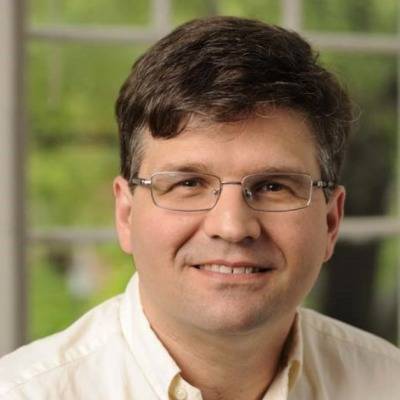- Lin Y.*, Pal DS*, Banerjee P, Banerjee T, Qin G, Deng Y, Borleis J, Iglesias PA and Devreotes PN. Ras suppression potentiates rear actomyosin contractility-driven cell polarization and migration. Nat Cell Biol (2024). https://doi.org/10.1038/s41556-024-01453-4
- Kuhn J, Banerjee P, Haye A, Robinson DN, Iglesias PA and Devreotes PN. 2024. Complementary Cytoskeletal Feedback Loops Control Signal Transduction Excitability and Cell Polarity. bioRxiv [Preprint]. 2024 Feb 13:2024.02.13.580131. doi: 10.1101/2024.02.13.580131. PMC10888828.
- Biswas D, Devreotes PN and Iglesias PA. 2021. Three-dimensional stochastic simulation of chemoattractant-mediated excitability in cells. PLoS Comput Biol. 2021 Jul 14;17(7):e1008803. PMC8330952. doi: 10.1371/journal.pcbi.1008803. eCollection 2021 Jul.
- Li X, Pal DS, Biswas D, Iglesias PA and Devreotes PN. Reverse fountain flow of phospha-tidylinositol-3,4- biphosphate polarizes migrating cells. EMBO J. 2021 Feb 15;40(4):e105094. doi: 10.15252/embj.2020105094.
- DiNapoli K, Robinson DN, Iglesias PA. Tools for computational analysis of moving boundary problems in cellular mechanobiology. Wiley Interdiscip Rev Syst Biol Med. 2020 Dec 10; e1514. doi: 10.1002/wsbm.1514.
- Zhan H, Bhattacharya S, Cai H, Iglesias PA, Huang C-H, Devreotes PN. 2020. An Excitable Ras/PI3K/ERK Signaling Network Controls Migration and Oncogenic Transformation in Epithelial Cells. Dev Cell. 2020 Aug 31;S1534-5807(20)30599-2. doi: 10.1016/j.devcel.2020.08.001.
- Bhattacharya S, Banerjee T, Miao Y, Zhan H, Devreotes PN, Iglesias PA. 2020. Traveling and standing waves mediate pattern formation in cellular protrusions. Science Advances. 2020 Aug 7; 6(32): eaay 7682. doi: 10.1126/sciadv.aay7682.
- Kliment CR, Nguyen JMK, Kaltreider MJ, Lu YW, Claypool SM, Bailey KL, Radder JE, Sciurba FC, Zhang Y, Gregory AD, Iglesias PA, Sidhaye VK, Robinson DN*. Adenine Nucleotide Translocase regulates airway epithelial homeostasis, mitochondrial metabolism and ciliary function. bioRxiv. May 19 2020. DOI: 10.1101/2020.05.18.101378
Miao Y, Battacharya S, Banerjee T, Abudaker-Sharif B, Long Y, Inoue T, Iglesias P and Devreotes P. (2019). Wave patterns organize cellular protrusions and control cortical dynamics. Molecular Systems Biology 15(3). DOI 10.15252/msb.20188585| Published online 11.03.2019.
Li X, Edwards M, Swaney KF, Singh N, Bhattacharya S, Borleis J, Long Y, Iglesias PA, Chen J, and Devreotes PN. 2018. Mutually inhibitory Ras-PI(3,4)P2 feedback loops mediate cell migration. PNAS published ahead of print Sept. 7, 2018. https://doi.org/10.1073/pnas.1809039115
- Artemenko Y, Axiotakis L Jr., Borleis J, Iglesias PA, Deveotes PN. 2016. Chemical and mechanical stimuli act on common signal transduction and cytoskeletal networks. Proc Natl Acad Sci USA. Nov. 22; 113(47):E7500-E7509. PMCID: PMC5127353 https://www.ncbi.nlm.nih.gov/pubmed/27821730
- Srivastava V, Iglesias PA, Robinson DN*. 2016. Cytokinesis: Robust cell shape regulation. Semin. Cell Dev. Biol. 2016; 53:39-44.
Schiffhauer ES, Luo T, Mohan K, Srivastava V, Qian X, Griffis E, Iglesias PA, Robinson DN*. Mechanoaccumulative elements of the mammalian actin cytoskeleton. Curr. Biol. 2016; 26: 1473-1479.
Swaney K.F., Borleis J., Iglesias P.A., and Devreotes, P.N. 2015. Novel protein Callipygian defines the back of migrating cells. PNAS 2015 Jun 30. pii:201509098. [Epub ahead of print]
- Wang M, Artemenko Y, Cai W, Iglesias PA and Peter N. Devreotes. (2014). The Directional Response of Chemotactic Cells Depends on a Balance between Cytoskeletal Architecture and the External Gradient. Cell Rep Nov 6;9(3):1110-21. doi: 10.1016/j.celrep.2014.09.047. Epub 2014 Oct 23. PMID: 25437564 [PubMed - in process]. PMCID:PMC4250826
- Tang M, Wang M, Shi C, Iglesias PA, Devreotes PN, and Huang CH (2014). Evolutionarily conserved coupling of adaptive and excitable networks mediates eukaryotic chemotaxis. Nat Commun. Oct 27;5:5175. PMCID: PMC4211273 [Available on 2015/4/27)]
Cai H, Katoh-Kurasawa M, Muramoto T, Santhanam B, Long Y, Li L, Ueda M, Iglesias PA, Shaulsky G, and Devreotes PN. Nucleocytoplasmic shuttling of a GATA transcription factor functions as a development timer. Science. 2014 Mar 21;343(6177):1249531. doi: 10.1126/science.1249531.
Huang, C.,Tang, M., Shi, C., Iglesias, P., and Devreotes, P.N. An excitable signal integrator couples to an idling cytoskeletal oscillator to drive cell migration. Nat Cell Biol. 2013 Nov;15(11):1307-16.
Luo T, Mohan K, Iglesias PA, Robinson DN. Molecular mechanisms of cellular mechanosensing. Nat. Mater. 2013; 12: 1064-1071.
Kee YS, Ren Y, Dorfman D, Iijima M, Firtel RA, Iglesias PA, Robinson DN. A mechanosensory system governs myosin II accumulation in dividing cells. Mol. Biol. Cell 2012; 23(8): 1510-1523.
Poirier CC, Ng WP, Robinson DN, Iglesias PA. Deconvolution of the cellular force-generating subsystems that govern cytokinesis furrow ingression. PLoS Comp. Biol. 2012; 8(4): e1002467.
Luo T, Mohan K, Srivastava V, Ren Y, Iglesias PA, Robinson DN. Understanding the cooperative interactions between myosin II and actin crosslinkers mediated by actin filaments during mechanosensation. Biophys. J. 2012; 102(2): 238-247.
Porter JR, Lee CSY, Espenshade PJ, Iglesias PA. 2012. Regulation of SREBP during hypoxia requires Ofd1-mediated control of both DNA binding and degradation. Mol. Biol. Cell 23:3764-3774.
Zhou Q, Kee Y-S, Poirier CC, Jelinek C, Osborne J, Divi S, Surcel A, Tran ME, Eggert US, Müller-Taubenberger A, Iglesias PA, Cotter RJ, Robinson DN. 14-3-3 coordinates microtubules, Rac, and myosin II to control cell mechanics and cytokinesis. Curr. Biol. 2010; 20:1881-1889.
Porter JR, Burg JS, Espenshade PJ, Iglesias PA. 2010. Ergosterol regulates SREBP cleavage in fission yeast. J. Biol. Chem. 285:41051-61.
Xiong, Y., Huang, C-H, Iglesias, P.A., and Devreotes, P.N. 2010. Cells navigate with a local-excitation, global-inhibition-biased excitable network. PNAS, 107:17079-17086.
Ren Y, Effler JC, Norstrom M, Luo T, Firtel RA, Iglesias PA, Rock, RS, Robinson DN. Mechanosensing through cooperative interactions between myosin-II and the actin crosslinker cortexillin-I. Curr. Biol. 2009; 19(17):1421-1428.
Reichl EM, Ren Y, Morphew MK, Delannoy M, Effler JC, Girard KD, Divi S, Iglesias PA, Kuo SC, Robinson DN.* 2008. Interactions between myosin and actin crosslinkers control cytokinesis contractility dynamics and mechanics. Curr. Biol. 18: 471-480. PMCID: PMC2361134
Chen, L., Iijima, M., Tang, M., Landree, M.A. Huang, Y.E., Xiong, Y., Iglesias, P.A., Devreotes, P.N. PLA2 and PI3K/PTEN pathways act in parallel to mediate chemotaxis. Developmental Cell. Developmental Cell. (2007) 12: 603-614.
Effler JC, Kee Y-S, Berk JM, Tran MN, Iglesias PA, Robinson DN.* Mitosis-specific mechanosensing and contractile protein redistribution control cell shape. Curr. Biol. 2006; 16(19):1962-1967. PMCID: PMC2474462
Janetopoulos C, Ma L, Devreotes PN, Iglesias PA. Chemoattractant-induced phosphatidylinositol 3,4,5-trisphosphate accumulation is spatially amplified and adapts, independent of the actin cytoskeleton. Proc Natl Acad Sci U S A. 2004 Jun 15;101(24):8951-6. PMC428453.


